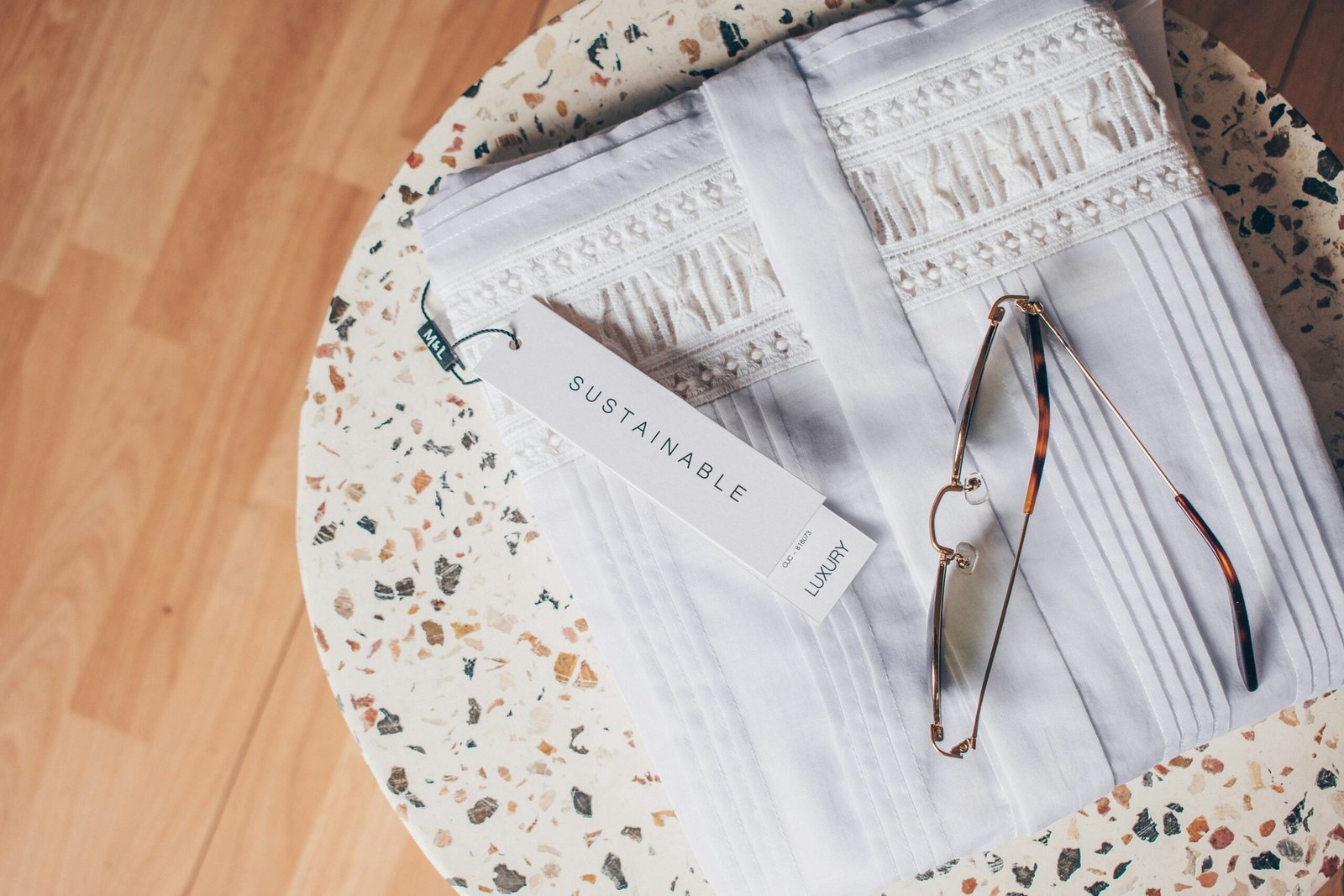Building an Eco-Conscious Wardrobe on a Budget: Sustainable Fashion Tips

Understanding Sustainable Fashion
Sustainable fashion encompasses a range of practices aimed at minimizing the environmental impact of clothing production and consumption while promoting ethical standards in the industry. At its core, it seeks to establish a balance between fashion needs and the planet’s health. The detrimental consequences of fast fashion, characterized by rapid production cycles and disposable consumer habits, have garnered significant attention in recent years. Fast fashion has been linked to pollution, excessive waste, and the depletion of natural resources, raising crucial environmental concerns.
Moreover, the ethical implications of fashion production also warrant attention. Many garments are manufactured under conditions that compromise workers’ rights, including low wages, poor working environments, and even child labor. By recognizing these problems, sustainable fashion advocates urge consumers to consider not only what they wear but also the broader impact of their purchasing choices on people and the planet.
The principles of sustainable fashion include a focus on eco-friendly materials, ethical labor practices, and a commitment to reducing wastefulness throughout the clothing lifecycle. Many brands are now incorporating organic, recycled, and biodegradable materials, thereby reducing dependency on non-renewable resources. Additionally, supporting local artisans and manufacturers further fosters ethical practices, creating economically viable jobs within communities.
Embracing sustainable fashion allows individuals to make conscious choices that contribute to the welfare of the planet and society at large. Transitioning to an eco-conscious wardrobe may also involve repairing and upcycling garments, purchasing second-hand clothing, or investing in high-quality pieces that withstand the test of time. By shifting towards sustainable fashion, consumers actively participate in promoting social responsibility and environmental stewardship while enjoying a more curated and meaningful wardrobe.
Assessing Your Current Wardrobe
Before embarking on the journey to build an eco-conscious wardrobe, a thorough assessment of your current clothing collection is essential. This process not only helps identify what to keep but also highlights what can be donated or recycled, ultimately aiding in the creation of a more sustainable fashion environment. Begin by emptying your wardrobe completely to take stock of each item.
As you review each piece, consider the frequency with which you wear it. If an item has not been worn in over a year, it may be time to let it go. Furthermore, think about the overall quality and versatility of the clothing. Aim to keep pieces that can be easily styled for various occasions. For instance, a classic white shirt can transition seamlessly from work to social outings, minimizing the need for multiple items.
Next, categorize your wardrobe into three distinct groups: keep, donate, and recycle. Items that are in good condition but no longer suit your personal style can be donated to local charities or thrift stores, extending their lifecycle. On the other hand, clothing that is damaged or worn beyond repair should be recycled responsibly. Look for local textile recycling programs that can handle these materials effectively.
To further streamline this process, consider employing a simple checklist. Ask yourself the following questions: Does this fit well? Do I love how it looks and feels? Is it versatile enough to be worn in multiple outfits? By adhering to these criteria, you are likely to identify sustainable pieces worth keeping in your wardrobe.
Ultimately, this assessment not only enhances your closet’s organization but also fosters a mindful approach to fashion. Evaluating your clothing choices leads to a more eco-friendly wardrobe, setting the foundation for future sustainable purchases.
Smart Shopping: Where to Find Affordable Sustainable Fashion
When embarking on a journey to build an eco-conscious wardrobe, smart shopping is essential, particularly if one aims to stay within budget. A prime avenue for finding affordable sustainable fashion is through second-hand shopping. Thrift stores and consignment shops are treasure troves that enable consumers to discover unique pieces while minimizing environmental impact. Shopping pre-owned clothing not only extends the life cycle of garments, but it also reduces waste, making it a highly eco-friendly practice.
For those who prefer the convenience of online shopping, various platforms cater to sustainable fashion enthusiasts. Websites that specialize in second-hand merchandise, such as Poshmark, Depop, and ThredUp, offer an extensive selection at budget-friendly prices. These online marketplaces allow shoppers to find gently used items and designer labels without the hefty price tag, all while supporting a circular economy.
In addition to thrift stores and online marketplaces, several brands prioritize sustainability and affordability. Companies like Reformation and Everlane are renowned for their commitment to ethical practices, producing stylish clothing with transparent pricing. Moreover, it is worth exploring local artisan markets or cooperative clothing stores that focus on sustainable production methods and fair trade practices, often offering reasonably priced goods.
Navigating sales and discount events can also be done ethically. Many eco-conscious brands have seasonal sales, allowing customers to purchase sustainable pieces at reduced prices. Additionally, shopping during local community events or participating in clothing swaps fosters a sense of community while promoting sustainable habits.
To ensure that purchases adhere to sustainable practices, consider the materials and labor involved in the creation of garments. Focusing on natural fibers, such as organic cotton, linen, or recycled materials, can guide shoppers in making environmentally responsible choices. By incorporating these strategies into your shopping habits, building an eco-friendly wardrobe on a budget becomes an achievable goal.
Caring for Your Fashion Choices to Ensure Longevity
In the pursuit of sustainable fashion, the decisions surrounding the maintenance of your clothing are as crucial as the choices made during purchasing. Caring for your garments appropriately not only enhances their lifespan but also diminishes environmental impact. Effective washing practices lay the groundwork for clothing longevity. Opting for cold water cycles and using biodegradable detergent can significantly reduce energy consumption and lessen the chemical load entering waterways. Additionally, less frequent washing can mitigate wear and tear on fabrics. When it is time to launder, consider using a mesh laundry bag to protect delicate items from snagging.
Storing clothes properly is another fundamental aspect. Ensure that your closet is free from dampness and direct sunlight, as both can lead to fabric decay. Choosing breathable garment bags for long-term storage can help maintain the integrity of delicate fabrics. Utilizing wooden or padded hangers instead of wire options can prevent shoulder bumps and preserve the garment’s shape. Implementing these strategies not only prolongs the life of your wardrobe but also aligns with sustainable practices by reducing waste.
Repairing garments rather than discarding them contributes significantly to a sustainable fashion ethos. Learning basic sewing techniques empowers individuals to mend and alter their clothing, thus avoiding unnecessary purchases and extending the utility of existing items. Resources such as online tutorials and local sewing classes can facilitate the acquisition of these essential skills. Furthermore, consider repurposing old garments into new pieces or functional items, such as upcycled fabric tote bags or patchwork quilts. Developing a sustainable care routine not only preserves your clothing but reinforces the values of eco-conscious living, enabling you to make considerate choices for both your wardrobe and the planet.

